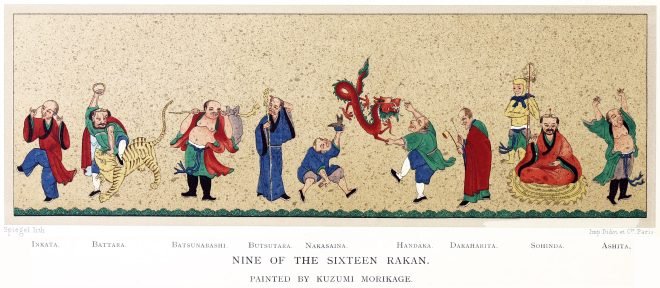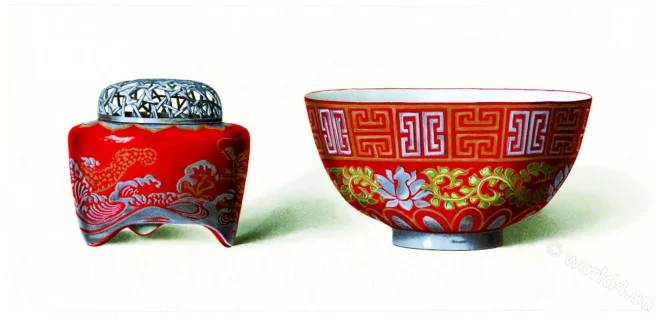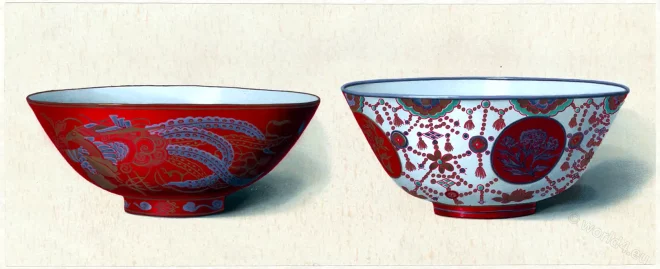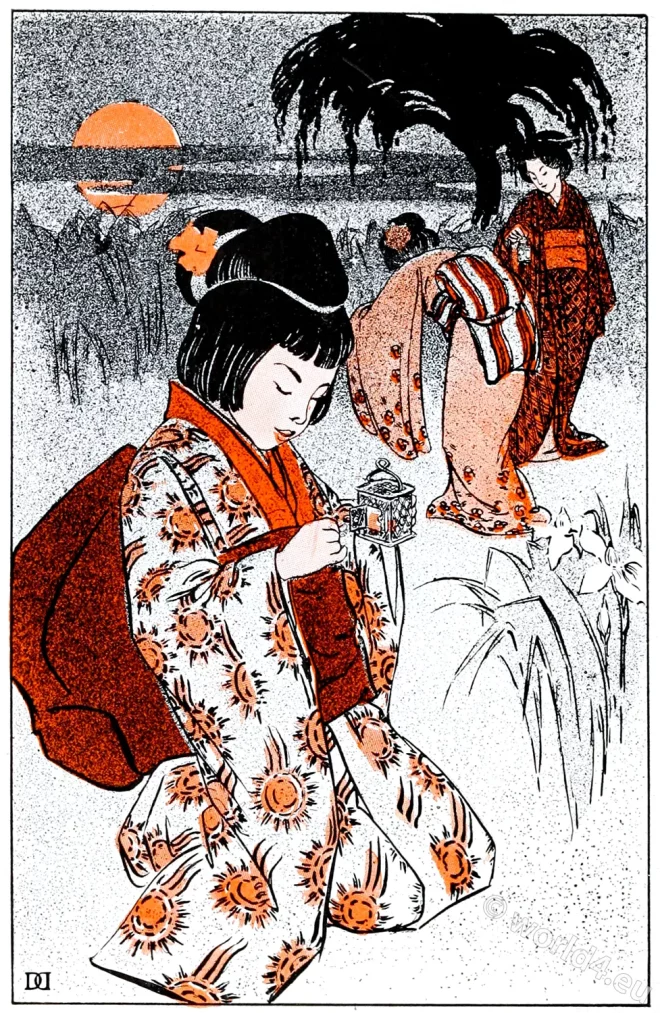Vases and bottle made from Kaga ceramics.
A bowl (hachi), Ko-kutani, Kaga Japan
Work of Tamora Gonzayemon. Painted by Kuzumi Moriage. Nine of the sixteen Rakan. 17th century.
Hitzen: Arita ceramic. Old Japan wares.
Pair of Temple lamps (toro), of porcelain. Bowl (hachi), of porcelain. Made for native users.
Japanese Ko Kutani ceramic. Incense burner, Rice bowl.
Incense burner (Koro), Rice bowl (Meshi-Wan) of Ko Kutani Porcelain, about 1730.
Two Japanese Kutani rice bowls, Japan.
Ko Kutani rice bowls. Period, 1700-1750.
The Fire-Fly’s Lovers. Fairy tale of old Japan
The fairy tale of Princess Hotaru-himé.
The “floating” Torii gate at Miyajima, Japan
The “floating” Torii gate at Miyajima or Itskushima (“Island of Light”)
The Ike-no-Niwa of the Imperial Palace at Kioto.
The Ike-no-Niwa, or “Garden of the Lake,” in the grounds of the Imperial Palace at Kioto
Dishes of late period Arita porcelain. Hizen. Japan.
Square-shaped Dish of late period Arita porcelain, boldly painted with the Japanese lion and foliage in rich blue.
Tatsu. The Dragon. Mythological Japan.
A fitting representation of power, symbolical of sovereignty, mysterious and omnipotent in its influence, is Tatsu










